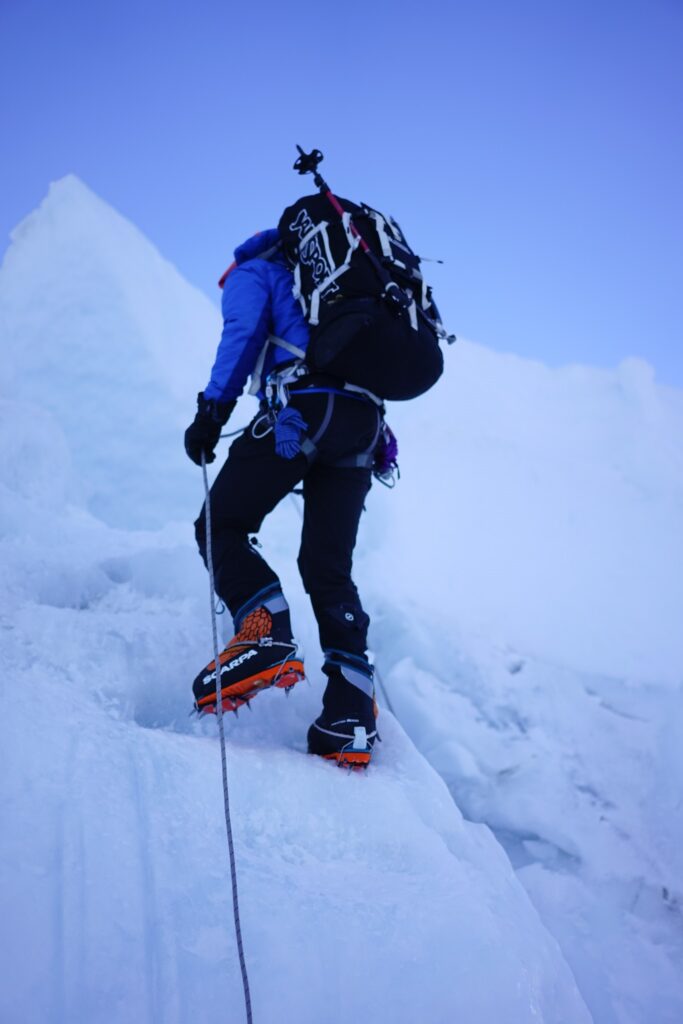
Which pair of boots to buy, or bring, for a specific trip, can be very confusing. This blog post is aimed at simplifying the process and providing more clarity about when it comes to mountaineering boots for your upcoming IMG trips! Â
8000m Boots:
Sometimes referred to as triple boots or Everest boots, 8000m boots are the warmest boots you can find and are required for the coldest places on the planet. We use these boots for trips such as the Vinson Massif in Antarctica and Mount Everest. These boots are also an option for Denali. The 8000m class of boots is highly specialized for being extremely warm, which makes them less versatile than other options.
Double Boots:
Double boots are the most versatile type of mountaineering boots. These are the best boots for Mt Rainier because it is often too cold for single boots. These boots will also work great for climbs ranging from Denali to any of our trips in South America. Double boots are very warm and feature a removable liner that both adds warmth and also aids in drying the boots at night. If you are considering buying just one pair of mountaineering boots, double boots are probably your best bet. Another benefit of double boots is that the liner is usually made of soft foam which will accommodate more foot shapes and tend to be more comfortable than single boots.Â
Full Shank Single Boots:
Full shank single boots are another fairly versatile type of Mountaineering boots. These boots can be used for glacier travel, ice climbing, and rock scrambles. They are not as warm as double boots but are definitely warmer than half shank single boots. There are several types of full shank single boots (with or without an integrated gaiter) but most full shank single boots provide a similar amount of insulation/warmth. These boots are only warm enough for Mt Rainier if the weather is quite warm. These boots work great for Mt Baker, Mt Rainier (if the weather is warm), and a variety of other climbs in the North Cascades.
Half Shank Single Boots:
Half shank single boots are the lightest and most nimble of all mountaineering boots. These boots are less warm than any other boots on this list. They are suitable for climbs in the North Cascades that include rock and glacier travel, and are at lower elevations where the insulation provided by other boots is less crucial. These boots work great for Mt Shuksan, Mt Olympus, or Forbidden Peak where their close fit, low weight, and slightly flexible sole work better on rock.Â
Fit:
In general, you want mountaineering boots to fit pretty loose. 8000 m boots should fit very loose and half shank single boots should fit the closest to your foot (with the rest of the types of boots falling between). Personally, my 8000 m boots are about two sizes bigger than my half shank boots. Historically some brands have fit differently from other brands (La Sportiva being narrower than Scarpa) but this tends to no longer be true. Different models from different companies will fit differently and just because one boot from a company fits well doesn’t mean another model boot from the same company will also fit you well. People seem to have the best luck finding a pair of boots that work for them by going into a store that carries a lot of boots or by ordering many pairs from an online retailer that has free returns.
Hopefully this provides some clarity when it comes to choosing your next pair of mountaineering boots. It is not an easy process so it’s best to start boot shopping well before your trip. Feel free to reach out to the office with any more questions.Â
